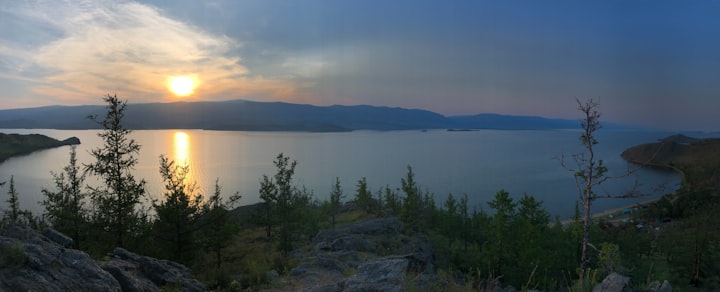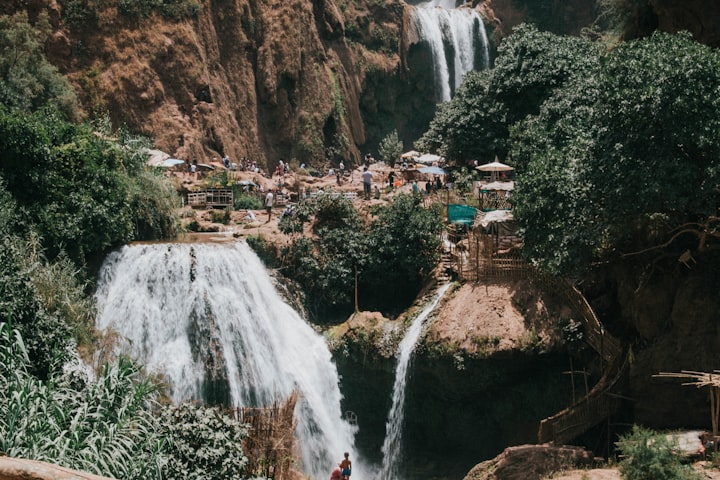The deepest lake in the world .
Precious information about the deepest lake in the world.

Introduction to Lake Baikal.
The deepest lake in the world, and it is also one of the largest and oldest lakes in the world. This lake is located in central Asia, specifically in Russia, approximately 400 miles from southeast Siberia to the north of the Mongolian border, this lake is distinguished from others With her beauty; It is one of the natural miracles of Siberia, and for this reason we will take a quick tour of the most important information related to it.
Lake Baikal was formed 25 million years ago, and it is very deep as we talked about in the introduction. It is surrounded by high mountain ranges, attracting many tourists from inside and outside Russia, there are those who intend to treat it with its water and the other enjoy the picturesque nature. There are about 27 islands in Lake Baikal, with more than 300 streams and rivers flowing to them.
Vladimir Putin and Baikal Lake
In August 2009, Russian Prime Minister Vladimir Putin dived to the bottom of Lake Baikal on board the Mir-1 bathymetric device and climbed to the surface. The journey to the bottom of the lake generally took about 4 hours. During the dive, Putin spoke to reporters, and the Mir system at that time was at a depth of 1395 meters, the deepest point in the lake's southern section.
The lake in numbers
Lake Baikal has a depth of 636 km north and 1637 km south, it is called "the fifth ocean in the world" because it contains a large reserve of fresh water and equals (23.6) thousand cubic kilometers (or about 20% of the amount of fresh water in the world, which is more than what it contains Great Lakes in North America combined), noting that they were listed by UNESCO in the World Natural Heritage List in 1996.
The plant and animal life
The plant and animal life in the lake varies, as it is between 1500 and 1800 species of animals living in different depths, and hundreds of plant species live on or near the surface. There are about 50 species of fish, which belong to seven families.
The climate
There are violent earthquakes that may strike this lake from time to time, knowing that it is a hollow lake that is not symmetrical, as there are many slopes that surround it. In winter temperatures range from -21 ° C, while in summer it reaches about 11 ° C. The surface of Lake Bakyal freezes in January and melts in May. The water temperature on the surface in August is between 10 to 12 degrees Celsius, and in shallow waters it reaches 20 degrees Celsius. During the Russo-Japanese War, the ice of Lake Baikal was extremely thick, enabling them to lay a railroad to transport supplies from Russia to the front of the battle during the winter.
The most popular industries
There are many industries scattered along the shores of Lake Baikal, such as: cellulose industry, paper, shipbuilding, fisheries, wood and many others.
Lake Baikal features
There are about 27 uninhabited islands in Lake Baikal, the largest of which is 45 miles (72 km) long, called Olkhon, and where about 1,500 people live, some villages have been built. Over 300 rivers and streams flow into Lake Baikal, but the Angara River is the only one that originates from this lake.
The lake transports 60 cubic kilometers (15.8 gallons) of water annually to the Yenisei River, and eventually the water makes its way towards the Arctic Ocean.
The Selenga River is the largest source of water for this lake, providing it with about 50% of its water. The Selinga River is known globally - as in Lake Baikal - for its biodiversity and its importance, according to the Ramsar Convention.
Baikal is the only deep lake with oxidizing water at its lowest depth, according to an article published in 2009 on BioScience. Although the earth is hot under the lake, the source of this heat is unknown.
Baikal is one of the most serene lakes in the world. When the lake is filled with summer water with melting snow from the mountains of Siberia, then you can see the depths of the lake to a depth of 130 feet (39 meters), and the reason for this amazing serenity is due to the purity of melted snow, and the presence of Plankton algae that feed on Remains floating on the surface, as well as a result of a lack of mineral salts in the lake.
Lake Baikal is warmer than the rest of Siberia but remains very cold in winter, with an average air temperature in winter of -6 ° F (-21 ° C).
The lake freezes despite its large size during winter and usually melts in May or June, and the thickness of the snow can reach 6 feet (2 meters). In summer, the average air temperature reaches 52 degrees Fahrenheit (11 degrees Celsius), while the water temperature in August may reach about 50 degrees Fahrenheit (10 degrees Celsius).
The history of the lake
This lake is the oldest lake in the world, reaching at least 25 million years old. The lake, and the mountains that surround it, were formed from breakage and movement in the Earth's crust.
The lake was probably a riverbed, but the tremors and cracks that affected the Earth's crust in that region widened the distance between the two banks of the river.
Parts of this lake's basin evolved at different periods during the third Geological Age - Tertiary Period (between 66 million to 2.6 million years ago), and the thaw also caused water levels to increase in the lake.
Wonderful facts about Lake Baikal, Russia
A collection of beautiful and wonderful information about Lake Baikal in Russia, the deepest lake in the world
It is likely that a series of lakes, which resembled the great lake, first developed, then unified in the Pliocene Epoch (5.3 to 2.58 million years ago), and there are several theories as to why this autism occurred Including: drowning, falling rocks, erosion, and earthquakes. Most likely, the cause is a combination of these factors. Baikal is located in a rift valley, and it observes 2000 earthquakes in it every year. These tremors increase the width of the lake and contribute to increasing its size. For example, an earthquake in 1862 caused the formation of Proval Bay.
Conclusion
Anyone who wants to visit Lake Baikal must go to it in the summer if he wants to watch its water and enjoy its healing properties. As for those who wanted to see it icy, they should visit it in the winter and endure its cold climate there.
About the Creator
Travel Expert
I have more than 15 years experience working in the tourism field. I have travelled to 11 countries and about 40 cities.
my own website .
www.tripprivacy.com





Comments
There are no comments for this story
Be the first to respond and start the conversation.